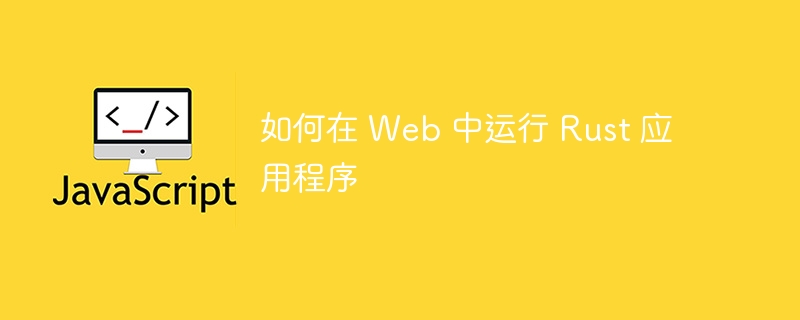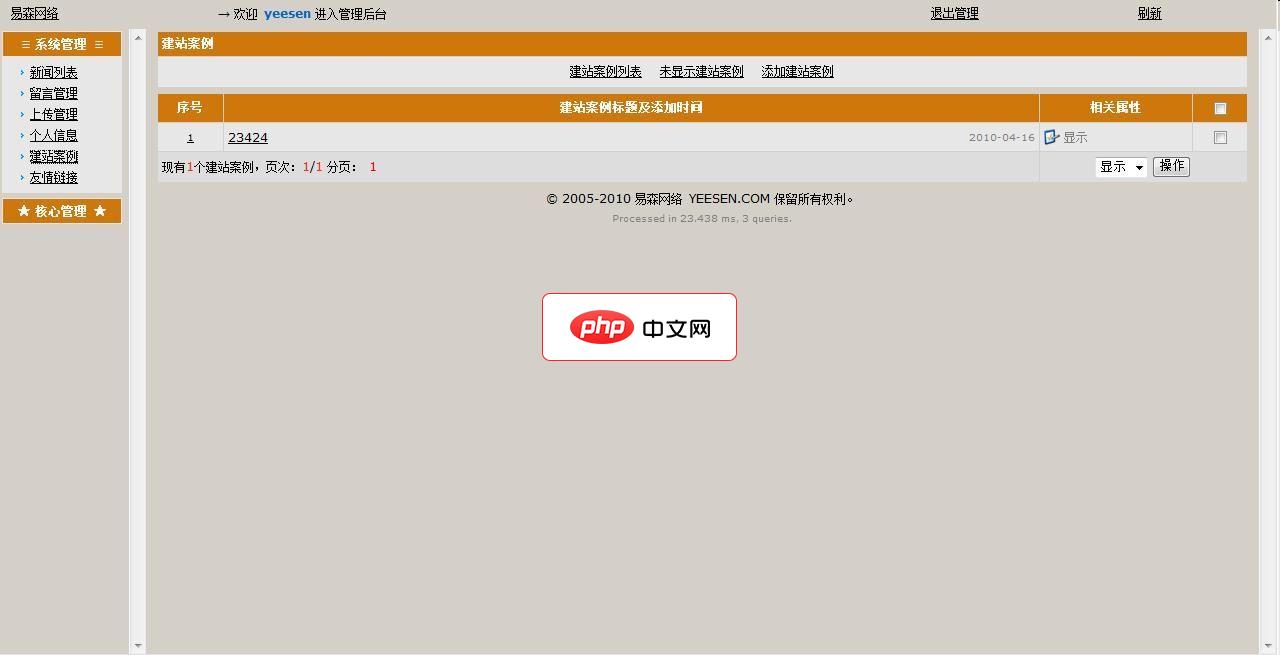在web中运行rust应用程序:循序渐进指南

本文将引导您完成在Web浏览器中运行Rust应用程序的步骤。我们将创建一个简单的Rust包,将其编译成WebAssembly (Wasm),并使用JavaScript与之交互。
第一步:安装Rust
首先,您需要在系统上安装Rust。请参考官方Rust安装指南:https://www.php.cn/link/59186584039c18248c1c4244e7305050 (请替换为实际链接,如果需要)。安装完成后,运行以下命令验证安装:
<code class="bash">rustc --version</code>
第二步:创建Rust包
使用Cargo创建一个新的Rust库项目:
<code class="bash">cargo new rust-web-app --lib</code>
这将创建一个包含Cargo.toml和src/lib.rs文件的目录结构。Cargo.toml是项目的配置文件,lib.rs包含Rust代码。
第三步:编译为WebAssembly
为了在Web上运行Rust代码,我们需要将其编译为WebAssembly。为此,安装wasm-pack工具:
<code class="bash">cargo install wasm-pack</code>
第四步:启用Rust和JavaScript互操作
为了让Rust和JavaScript能够互相通信,我们需要使用wasm-bindgen crate。修改Cargo.toml文件,添加wasm-bindgen依赖:
<code class="toml">[package] name = "rust-web-app" version = "0.1.0" edition = "2021" [lib] crate-type = ["cdylib"] [dependencies] wasm-bindgen = "0.2"</code>
然后运行以下命令安装依赖:
<code class="bash">cargo build</code>
第五步:编写Rust代码

如果您是新用户,请直接将本程序的所有文件上传在任一文件夹下,Rewrite 目录下放置了伪静态规则和筛选器,可将规则添加进IIS,即可正常使用,不用进行任何设置;(可修改图片等)默认的管理员用户名、密码和验证码都是:yeesen系统默认关闭,请上传后登陆后台点击“核心管理”里操作如下:进入“配置管理”中的&ld
 0
0

在src/lib.rs中编写一个简单的函数,例如加法函数,并使用#[wasm_bindgen]属性将其暴露给JavaScript:
<code class="rust">use wasm_bindgen::prelude::*;
#[wasm_bindgen]
pub fn add(left: u64, right: u64) -> u64 {
left + right
}</code>第六步:编译为WebAssembly并生成JavaScript绑定
使用wasm-pack编译Rust代码并生成JavaScript绑定:
<code class="bash">wasm-pack build --target web</code>
这将在pkg目录下生成必要的WebAssembly文件和JavaScript绑定代码。
第七步:创建HTML文件
创建一个index.html文件,引入生成的JavaScript文件并调用Rust函数:
<code class="html"><!DOCTYPE html>
<html>
<head>
<meta charset="utf-8">
<title>Hello Rust</title>
</head>
<body>
<script type="module">
import init, { add } from "./pkg/rust_web_app.js";
init().then(() => {
const sum = add(5, 10);
console.log("5 + 10 =", sum);
});
</script>
</body>
</html></code>第八步:运行应用程序
使用本地Web服务器(例如,python -m http.server)提供index.html文件。在浏览器中打开index.html,并在浏览器控制台中查看结果(5 + 10 = 15)。
最终项目结构:
<code>.
├── Cargo.lock
├── Cargo.toml
├── index.html
├── pkg
│ ├── package.json
│ ├── rust_web_app.d.ts
│ ├── rust_web_app.js
│ ├── rust_web_app_bg.wasm
│ └── rust_web_app_bg.wasm.d.ts
├── src
│ └── lib.rs
└── target
...</code>参考:
希望这个指南对您有所帮助! 请记住根据实际情况调整路径和文件名。
以上就是如何在 Web 中运行 Rust 应用程序的详细内容,更多请关注php中文网其它相关文章!

每个人都需要一台速度更快、更稳定的 PC。随着时间的推移,垃圾文件、旧注册表数据和不必要的后台进程会占用资源并降低性能。幸运的是,许多工具可以让 Windows 保持平稳运行。

Copyright 2014-2025 https://www.php.cn/ All Rights Reserved | php.cn | 湘ICP备2023035733号